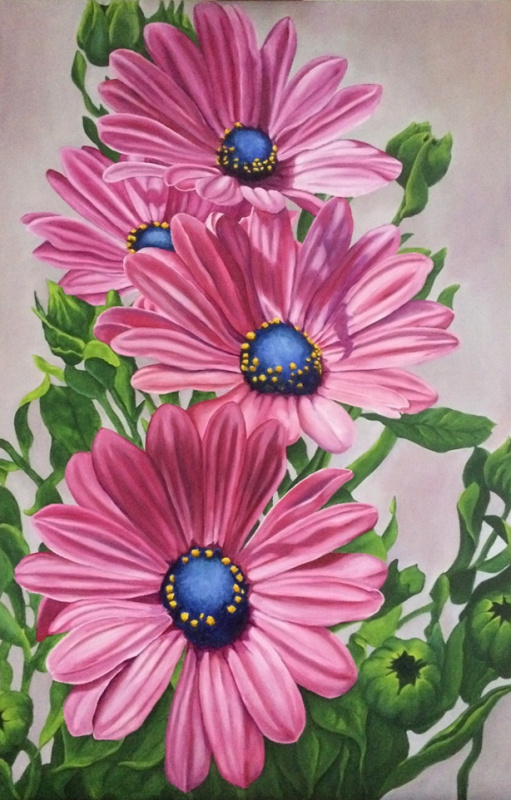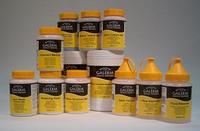 Acrylic paint is an incredibly fine medium. It provides a flexible and very strong paint layer. The colorfastness is excellent. The paint is available in different qualities and many colors. Acrylic paint is an incredibly fine medium. It provides a flexible and very strong paint layer. The colorfastness is excellent. The paint is available in different qualities and many colors. |
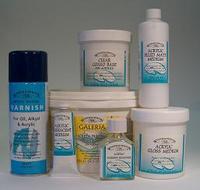 However, acrylic paint has a significant difference from oil paint: it dries very quickly. Additionally, the paint normally dries slightly glossy and very smooth, with the brush strokes hardly visible. Although the paint can be used well without extra additives, many additives have been developed to change the appearance of the paint. A complete overview is almost impossible to make, but the most commonly used ones are listed in this article. These can be roughly divided into five categories: However, acrylic paint has a significant difference from oil paint: it dries very quickly. Additionally, the paint normally dries slightly glossy and very smooth, with the brush strokes hardly visible. Although the paint can be used well without extra additives, many additives have been developed to change the appearance of the paint. A complete overview is almost impossible to make, but the most commonly used ones are listed in this article. These can be roughly divided into five categories: |
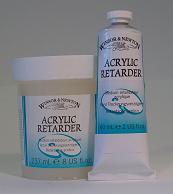 1. Mediums or additives that slow down drying. 1. Mediums or additives that slow down drying.The drying time of acrylic paint is very short. This sometimes makes it difficult to paint smooth color transitions, especially on large surfaces. Various manufacturers have developed drying retarders to extend the drying time.
|
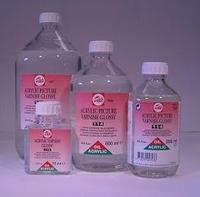 2. Mediums that thin or make the paint more fluid, often combined with a gloss level. 2. Mediums that thin or make the paint more fluid, often combined with a gloss level.Some brands of acrylic paint are very pasty. This can be challenging, especially when depicting small details. It is also easier to work in layers with more fluid paint. The paint naturally dries slightly glossy, which not everyone likes. Special mediums have been developed to improve flow and adjust the gloss level.
|
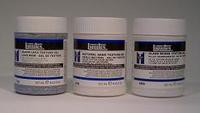 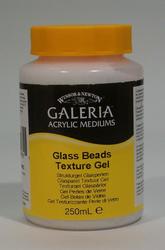 3. To add texture to your painting or make the brush stroke more visible. 3. To add texture to your painting or make the brush stroke more visible.Acrylic paint dries very smooth and tight. If you want some relief in your work or want the brush stroke to be visible, you can use texture mediums, possibly combined with various materials. These mediums can be further divided into two categories. Specially suitable for materials that have already been added or can be added such as beads, sand, stones, wood, and paper:
|
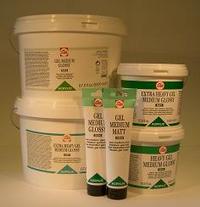 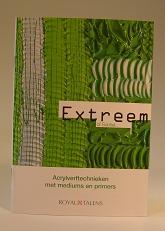 Texture mediums make the brush stroke very visible. Often, there is a choice for more or less relief. These are mixed with the paint to work very pasty. Most art supply stores have a free booklet from Talens explaining how to work with the various structure mediums. Texture mediums make the brush stroke very visible. Often, there is a choice for more or less relief. These are mixed with the paint to work very pasty. Most art supply stores have a free booklet from Talens explaining how to work with the various structure mediums.
|
 4. Varnishes. 4. Varnishes.To give your painting extra protection or to even out differences in gloss levels, you can finish it with special acrylic varnish.
|
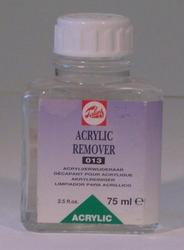 5. Miscellaneous. 5. Miscellaneous.This includes all products not directly used for the painting but specifically developed for working with acrylic paint.
|



